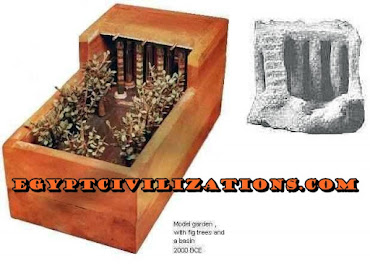Houses in ancient Egypt

How was the situation and the shape of the houses in ancient Egypt
The Egyptian family was distinguished by its large size, so their homes were large in size, built with mud bricks, and the roof was covered with palm tree trunks, and the rooms were small, coated with a layer of plaster and decorated with colorful decorations. The ancient Egyptians built it on the banks of the Nile River Valley on land high from the flood level
They were built near the palaces of the kings, while the rich lived in villa-like houses characterized by their grandeur overlooking a garden with plants, and from the back there was a back staircase leading to the roof
As for the workers' houses, they are smaller in size, the windows were very high and very small to protect from the intense heat of the sun, and they are similar to the primitive houses found in the present villages
Models of such houses were found in a Middle Kingdom cemetery of a person called "Maktra"
It is made of wood, as was depicted on the walls of the cemetery of "Hajjhoti Nefer", the various activities that took place
Take place indoors daily
..............................
In the late “Old Kingdom” era, then in the “Middle Kingdom” era, the form of housing reveals to us, through “houses of life”, some models and discoveries. They are “houses of life,” it turns out, that all the dwellings could have been entered after crossing a corridor or a large walkway. In the era of the Tenth Dynasty, houses with a higher level appeared, and it seemed to be used as a store or warehouse for goods. And during the Middle Kingdom,
The main room was either on the ground floor or on the floor above. Most of the time, the latter was provided with windows that opened and overlooked a portico that overlooked the row of columns erected at the entrance
There, the people of the house would sit on the sweltering summer nights, inhaling some of the fresh, damp breeze
The model presented by the drawings in the cemetery of the so-called “Maktra”, as we mentioned earlier, belongs to the eleventh family, and in it we see that the corridor is preceded by a courtyard with several trees scattered around it. His dwelling appears, in every sense of the word
Thus, the house has several annexes: a storehouse, a brewery, an altar, a trade shop, a spinning and weaving workshop, a store for storing foodstuffs, and a horse stable
.................
Regarding the houses of the common people, or the luxurious Amarna palaces, they do not accommodate any special places in the harem: this means that the Egyptian spouses, in that period, were sharing one room together, and their children in their own rooms for privacy and independence
As for the wealthy Amarna, they tended to be intimate and warm in the family: there is no doubt that King Akhenaten was the clearest example of this
Regarding ablution places (baths), all the luxurious homes, beginning in the "Middle Kingdom", and perhaps some earlier, had them. And sometimes, the houses in the large cities in particular, appeared in the form of successive floors. Here is the story of “Satney”, as an example tells us: Tebubi used to stay in a room on the upper floor .. ”Finally, the walls of the halls were painted and decorated with beautiful floral or engineering scenes as was known about the ancient Egyptian art




Comments
Post a Comment